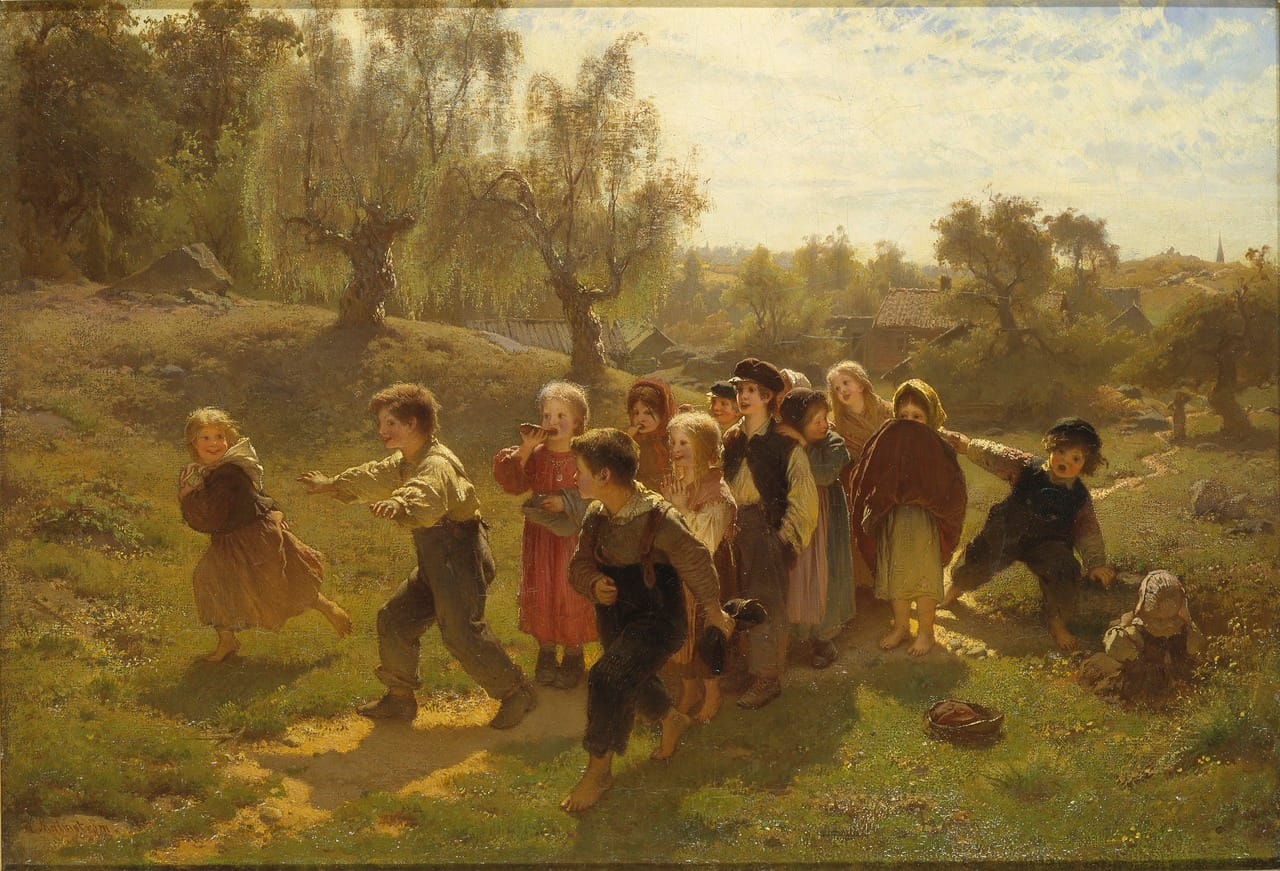The Cult of the Viking Goddess
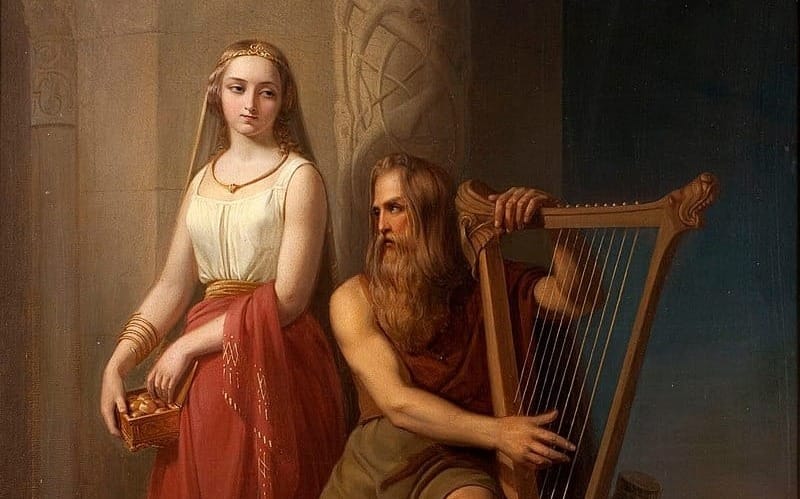
The most striking thing about the Norse and Germanic goddesses is that they disappeared for a millennium, from the onset of the Christian era until the late 20th century. Why do they appear so infrequently in European art and literature, when there are so many paintings of Aphrodite and Venus and the Virgin Mary? The only images of Freyja - like those by 19th century Swedish painters Nils Blommér and John Bauer - capture none of the magic. There are several of Iðunn, a lesser goddess associated with apples and youth and fertility - for example, the painting above - by Blommér.
The goddess Hel is also missing. The image below by German illustrator Johannes Gehrts (in 1889) is a bit unusual, appearing in a book about comparative religion.
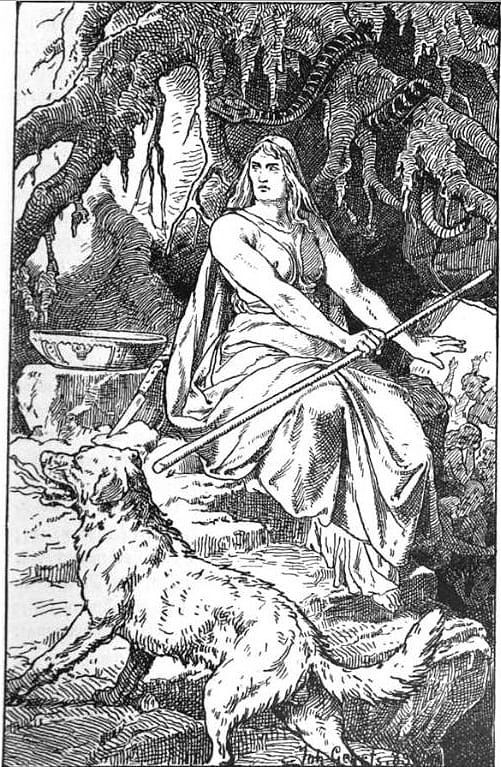
Nowadays, the pagan goddesses have made a comeback in latter-day pagan, heathen and feminist movements where Hel and Freyja are social media stars (Reddit, Instagram, YouTube, DeviantArt, etc.). More here. They also influenced the films of Ingmar Bergman. But if the northern goddesses were as important as the folklorist and scholar Hilda Ellis Davidson says they were, what happened to them in the Christian era? It appears the qualities they represented were displaced by Christian missionaries into other subjects, like the Virgin Mary.
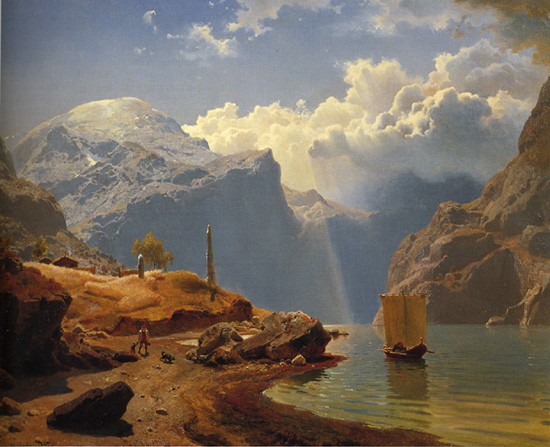
Above is From Hardanger (1847) by Norwegian Romantic painter Hans Gude. He lived most of his life outside Norway, but he successfully evokes the old pagan magic in this landscape. The ship was sometimes a symbol of death associated with Freyja. For the Romantics this goddess evoked a lost era, invisible now but a felt presence nonetheless.
There is no inherent reason why women should be identified more closely with fertility, nature and the creation of life (or death) than men. It takes two to tango. In Norse mythology this was recognized in the duality of Freyja and Freyr, sister and brother.
Perhaps this is why childhood as a metaphor became increasingly popular, such as what you find in the many works of Carl Larsson, or the under-rated 19th century Swedish painter August Malmström. The one below translates as Children Playing in the Garden:
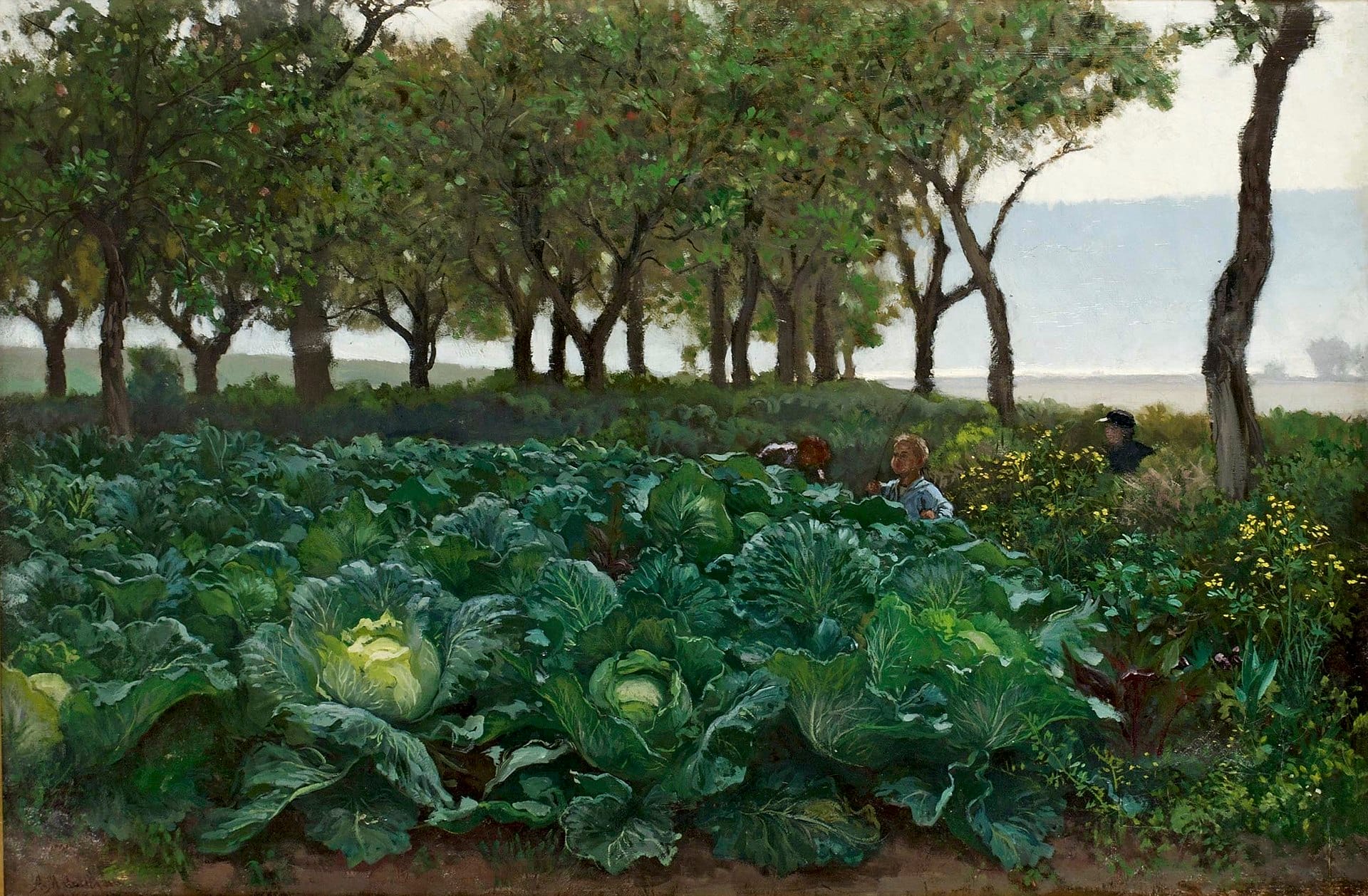
This one is The Game: the Swedish title Sista paret ut literally means "Last pair out"...
